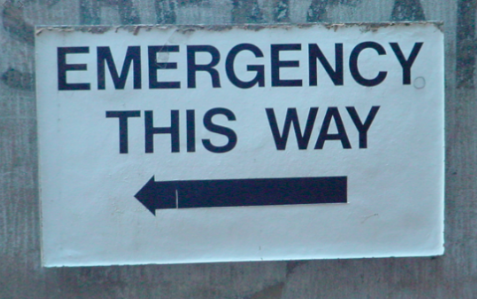From issue 22 of What’s Next (June/July 2009).
We’ve had Spanish flu (1918-19), Asian flu (1957) and Hong Kong flu (1968-69). Then we had SARS, bird flu and recently, swine flu. There is also seasonal flu, which appears every winter and kills about 250,000 people annually, although this is often forgotten. The idea, “community of anxiety”, was coined in 2004 by the writer, Ian McEwan, in Saturday, a novel about events surrounding the Iraq war. A similar idea is information pandemics. Both ideas describe the way fear and anxiety are spreading throughout the world, fuelled primarily by the interconnectivity of digital communications. It can start with a single email, spread to a blog and end up on Twitter. The result is global panic on an unseen scale and outbreaks are difficult to contain.
In early May, the World Health Organization talked about the need to stockpile food and water due to the swine flu outbreak and raised the threat level to five out of a possible six. Meanwhile, airports were installing thermal scanners and newspapers revelled in the story as it grew more scary and spectacular. The whole world seemed to be running for cover wearing a variety of (mostly useless) facemasks. Fear was spreading fast, fed with a mixture of confusion and impotence. The threat is real enough. The 1918 outbreak killed 20-50 million people in less than 18-months while the Black Death in the 14th century wiped out a third of the European population in just two years. Even the Asia and Hong Kong pandemics killed about 1-2 million people apiece. But we are confusing what’s possible with what’s probable. The reason is a collective feeling – a mood if you like – that something big and nasty is coming our way. This is partly because a string of events, from 9/11 and climate change to the economic collapse, have left us feeling unsure about what’s next. It is possible that a real pandemic will eventually emerge.
It will probably start in an overcrowded Asian city and travel economy class on a jet to the US and Europe. We may be able to contain it or we may not. The science surrounding such things is uncertain. Interestingly though, there appears to be a sense that we deserve things like this to happen to us. In some way, we are collectively guilty (because we borrowed too much money or damaged the planet with our selfish, materialist ways, perhaps) and we need to be punished. There is also a warped sense of curiosity at play. What would the world look like after a genuine pandemic? Would the death of 50 million people give everyone more food to eat? Another example of the fear factor was the jet that flew low over New York in early May. People automatically assumed another terrorist attack and panic whipped around Manhattan like wildfire. It turned out to be someone taking photographs but by then it was too late. And this, perhaps, is the point. Information now flows around the world too quickly and there is not enough time to properly react or to separate fact from opinion, anecdote from analysis, or sensation from science. There is too much information and much of it is unreliable.
Thanks to Web 2.0 the old hierarchy of knowledge, where source related to trustworthiness and reliability, has broken down. Furthermore, the people we used to trust (scientists, politicians, religious figures) are now widely distrusted so we ignore them. Swine flu is killing about 0.1% of those it infects; the mortality rate for the 1918-19 variety was 2.5-5.0%. So very few people have died so far. This could still change but I doubt it. Nevertheless, the sense of impending apocalypse remains.
Ref: Sydney Morning Herald (Aus) 2-3 May 2009, ‘Fear fever’, J. Huxley. www.smh.com.au See also The Fourth Horseman: A history of epidemics, plagues and other scourges by Andrew Nikiforuk, Panicology by Simon Briscoe and Hugh Aldersey-Williams and Risk: The science & politics of fear by Dan Gardner.

